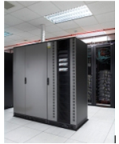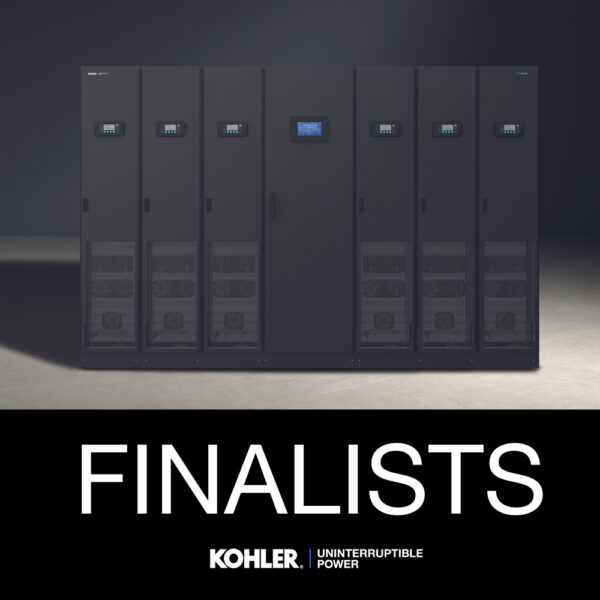Big Data – an explosion in data generated from multiple sources – is expected to affect most organizations if it has not done so already. While this can present opportunities as well as challenges, data center operators need a strategy for this large and sometimes unpredictable growth. Today, uninterruptible power supplies (UPSs) are essential to such strategies. Here, Alex Emms, Operations Director at KOHLER Uninterruptible Power Ltd, looks at the UPS topologies that help data centers meet the challenges of Big Data.
According to IBM, we create 2.5 quintillion (1018) bytes of data every day, with growth so fast that 90% of the data in the world today has been generated in the last two years. Much of this data, in terms of its size and rate of growth is unstructured, unrelated and unpredictable as it is generated by sources as varied as climate sensors, trading data, blogs and social media as well as customer records and other more traditional content. Some corporations are seeing this as an opportunity as well as a challenge; with the right tools, the emerging availability of this data provides possibilities for deeper insights into their operation, allowing better-informed, more accurate business decisions to be made.
However, handling this growth in data, and applying new computing solutions to extract the required intelligence, calls for a significant increase in computing power and its associated infrastructure. A report commissioned by Cable & Wireless Worldwide highlights that companies studying Big Data applications have discovered that over the next two years, capacity requirements will grow by 40% to 50%. However, in spite of this, most organizations are yet to consider this within their forward capacity planning (see Figure 1).
Fig 1: most organisations have yet to properly consider their forward planning capacity
As data center managers seek to accommodate this fast, sometimes unpredictable growth, they must ensure that their infrastructure expansion keeps pace with that of their data processing equipment, without compromising its reliability or availability. The uninterruptible power supply (UPS) is one critical component of this infrastructure – and it’s an area in which KOHLER Uninterruptible Power Ltd (KUP) can help significantly. They have significant experience in developing and supplying uninterruptible power supply topologies that can be rapidly scaled to handle fast-changing load requirements.
Scalable UPS Topology
KUP’s scalable topology benefits from major advances in semiconductor technology. UPS industry peer systems were built around a phase-controlled rectifier inverter and output transformer. Using modern IGBT semiconductors, more recent systems comprise a fixed rectifier followed by a DC converter. This converter boosts the rectifier output voltage fed to the inverter, allowing it to produce an AC output voltage sufficient to drive the load directly, thus eliminating the transformer.
Transformerless design has several important advantages over transformer-based implementations. Efficiency is immediately improved by about 5%, which, in turn, substantially reduces heat loss and operating costs. Other benefits include improved input power factor, reduced input current harmonic distortion, lower audible noise. However, another key benefit is a substantial reduction in the uninterruptible power supply’s size and weight. This arises because this approach not only eliminates the transformer, but also the 12-pulse rectifier previously needed to improve input THDi performance. As an example of the savings possible, a transformer-based 120kVA UPS would weigh 1,200 Kg and occupy a footprint of 800 mm x 1650 mm, while its transformerless 120kVA equivalent would weigh 310 Kg and occupy 750 x 850 mm.
This reduction in size and weight has had a profound impact on UPS power supply design, because it means that UPS power systems – even three-phase types – can realistically be built using rack mounting modules rather than monolithic floor standing units. Great new opportunities in flexibility, space saving and scalability become possible. KUP’s KOHLER PW 9000DPA UPS, for example, comprises a vertical racking frame that accepts up to five modules, available in ratings from 10kVA to 50kVA that can be added or removed incrementally to efficiently keep pace with the data center load as it changes over time.
For example a data center load could initially be 50kVA, serviced by a single 50kVA module mounted in the rack. A second 50kVA module could be added to provide N+1 redundancy. More modules can be added as the load grows, until it reaches 200kVA; this would be serviced by five 50kVA modules, with N+1 redundancy maintained. Note how this incremental growth allows redundancy as well as capacity to be achieved very efficiently; two stand-alone systems of 200kVA each would be needed to support a 200kVA load with N+1 redundancy, whereas the modular topology achieves the same redundancy with 250kVA.
The flexibility and easy scalability afforded by modular uninterruptible power supply topology are valuable tools for data center operators engaged in managing Big Data. By using vertical scaling within a UPS rack as described, they make efficient use of their data center room, adding UPS capacity without increasing floor space. The KOHLER PW 9000DPA can achieve up to 342 kW/m2 power density in this way. Just as importantly, increases in the UPS’s capacity can be deferred until required, eliminating unnecessary hardware expenditure. When needs do arise, new modules can be simply mounted into the frame without even interrupting power to the load – there is no disruption, building or engineering work involved.
If the capacity demand forecast has led to sufficient power cabling and floor space allocation, expansion beyond the original frame’s capacity is also fast and simple (see Figure 2). More frames can be provided to accept further UPS power modules, with up to five frames being parallelable for up to 1MVA N+1 capacity in a process referred to as horizontal scaling. The frames contain all of the input protection, input and output isolation required by the UPS power modules. This means that any associated switchgear panels can be smaller, more easily installed and lower cost than those essential for standalone UPS power systems. It is also why no additional electrical installation work is required when more capacity is added.
Figure2: A proper demand forecast will lead to sufficient power cabling and floor space allocation
Maintaining high availability
With a modular uninterruptible power supply’s easy vertical and horizontal scalability, data center operators can effectively plan for expected future growth in the critical load, and accommodate it as it happens. However it is essential that they can do so without compromising the availability of clean power, which justifies the UPS’s existence. In fact, modular UPS topology has a multipart approach to maximizing availability, which we can explain by looking at how availability is defined:
Availability A=MTBF/(MTBF+MTTR)
Where MTBF = Mean Time Between Failures and MTTR = Mean Time To Repair. From this we can see that Availability can be improved both by increasing MTBF and by decreasing MTTR. The KOHLER PW 9000DPA is so-called because it features Decentralized Parallel Architecture, in which all of the UPS modules feed the critical load directly. With no single points of failure, the UPS power modules operate in a truly redundant mode. The failure of a single module will not affect the continued operation of the others. Modular UPS power topology also reduces MTTR, because a faulty module can be quickly and easily replaced, rather than attempting repairs in situ. This can cut repair times from six hours to about half an hour. The overall result is a UPS power system that can achieve 99.9999% availability.
A scalable solution to Big Data growth
To summarize, there are many reasons why modular UPS topology offers an attractive way forward for data center operators needing to accommodate or plan for Big Data and its associated impact on capacity demand. Provision can be made for large scale and unpredictable growth, without having to purchase hardware unless or until it is needed. When extra capacity does become essential, it can be installed quickly, easily and without disruption to the critical load.
For more information regarding any of our UPS power products or services, you can get in touch with KOHLER Uninterruptible Power via our contact page or call us on 0800 731 3269.






